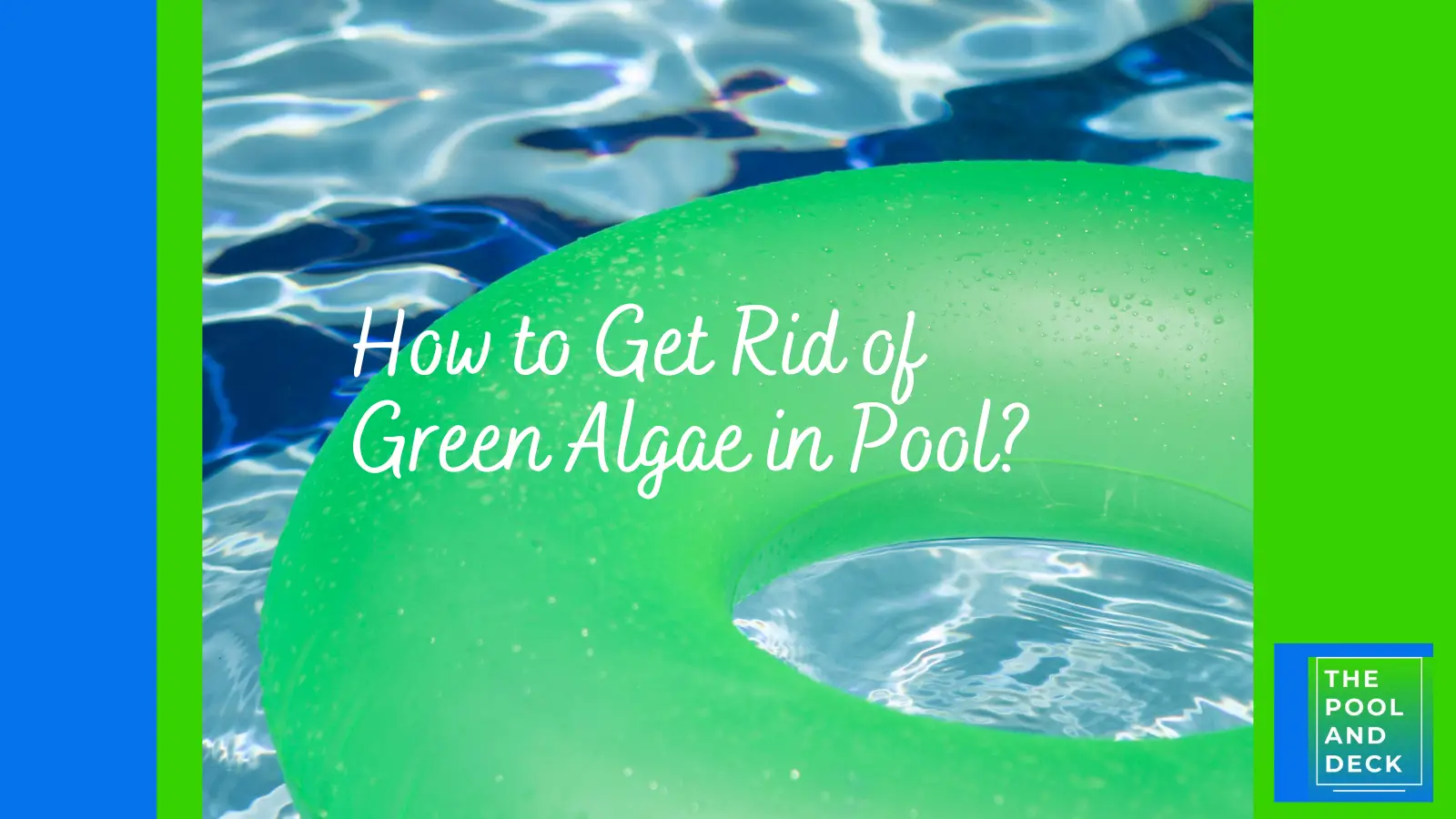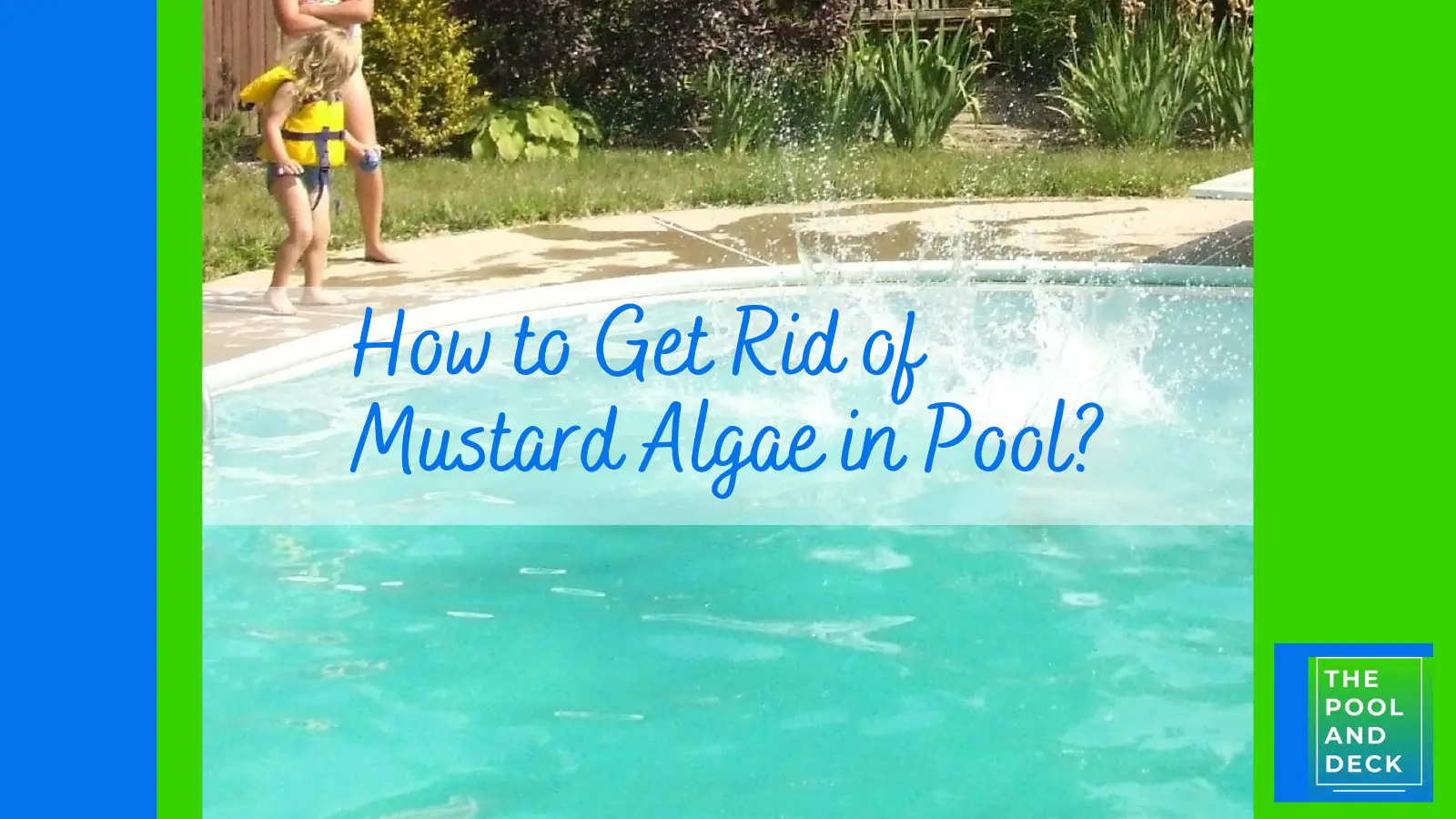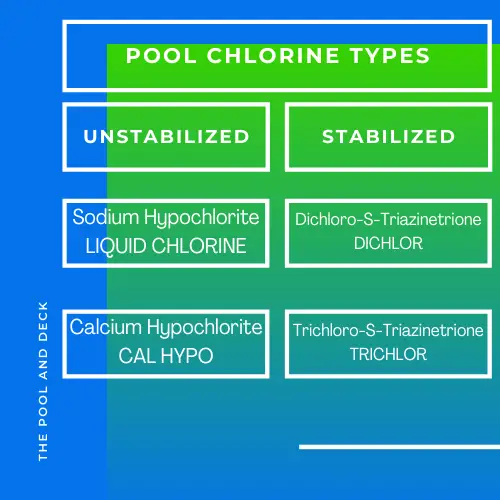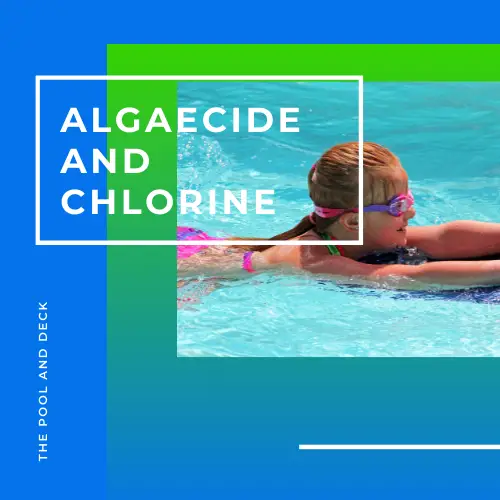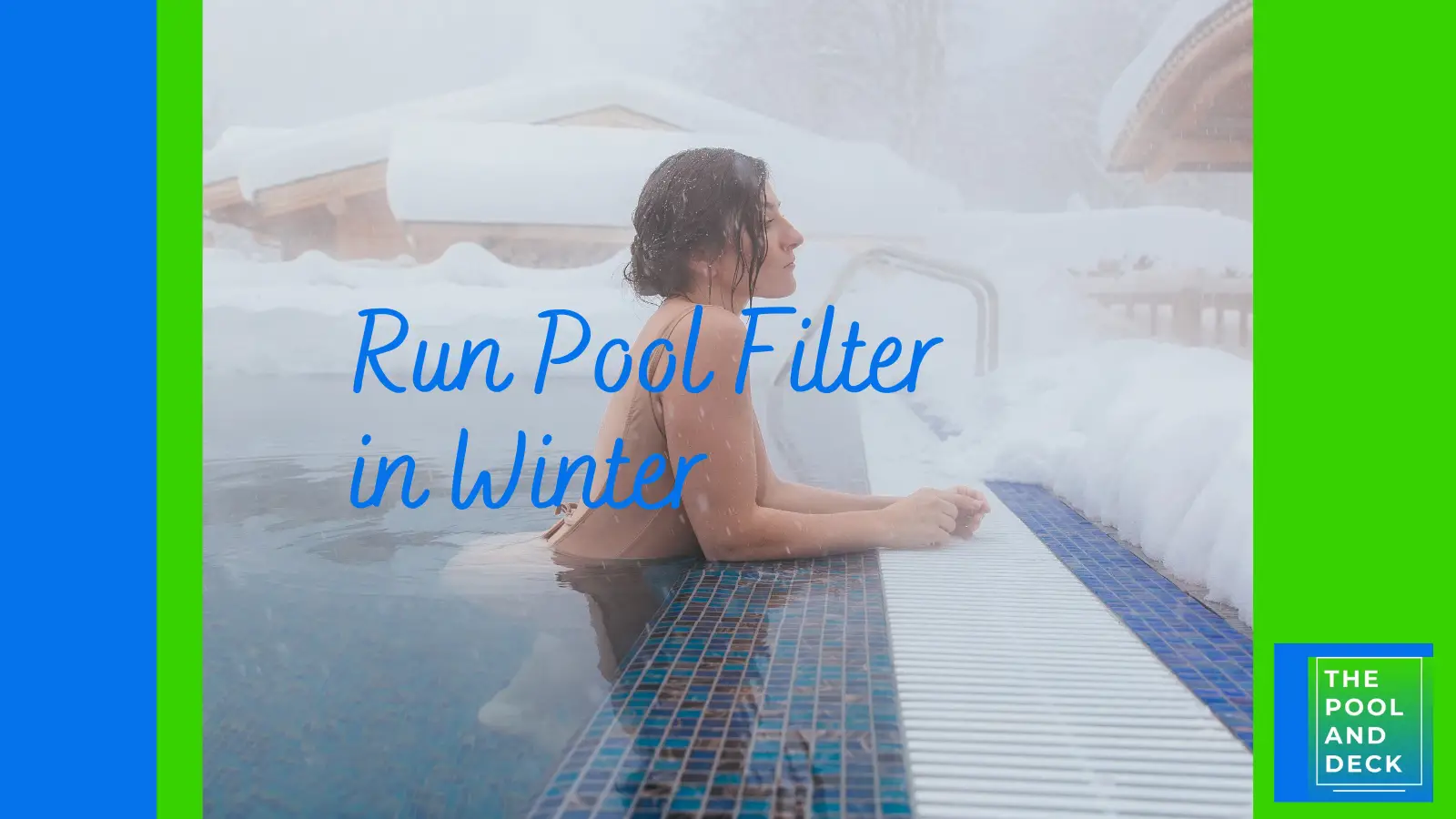Dichlor Or Trichlor? (Which One Is Better For You?)
thepoolanddeck.com is a participant in the Amazon Services LLC Associates Program, an affiliate advertising program designed to provide a means for sites to earn advertising fees by advertising and linking to Amazon.com . The website is also an affiliate of a few other brands. The affiliate links never increase your purchase price. We do appreciate your support. Thank you very much!
Table of Contents
Which is Better, Dichlor or Trichlor?
As a pool owner you sure want your pool to not only look sparkling clear, you also want it to be free of germs, bacteria & algae at all times. This means your pool should be fully sanitized using chlorine or something similar. There are many chlorine products out there. Dichlor Or Trichlor, Which Is Better For Your Pool?
Dichlor is better than Trichlor for shocking your pool. Trichlor is better than Dichlor for regular maintenance sanitization. Both are stabilized sources of chlorine and will add Cyanuric Acid (CYA), a chlorine stabilizer, to your pool.
Dichlor is available as a granular powder, which dissolves easily and quickly when sprinkled on the pool surface. Dichlor is rich in Available Chlorine and will raise the Free Chlorine (FC) level of the pool substantially. Shocking your pool requires you to raise the Free Chlorine (FC) level by at least 10 ppm, usually 25-30 ppm.
The high levels of chlorine are required only for a short period of time (usually less than 24 hours). The objective is to clear up a pool that is either experiencing “algae bloom” or a high influx of pathogens (the aftermath of a pool party!)
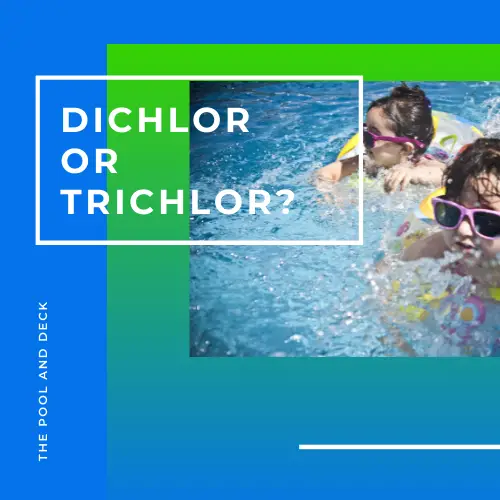
Trichlor is available as tablets (that look like hockey pucks) and are designed to dissolve slowly over a week. Trichlor tablets can be placed in the skimmer, a floater or a feeder. The tablet will release Free Chlorine (FC) at a slow steady pace so as to keep the pool chlorine level at 2-4 ppm, throughout the week.
Free Chlorine (FC) level of 2-4 ppm (ideally 3 ppm) is the sweet spot at which the germs, bacteria & algae are kept at bay and yet the pool water will not cause your skin & eyes to itch or burn.
What is the Similarity Between Dichlor and Trichlor Chlorine?
The reason for comparing Dichlor and Trichlor is that both serve a similar objective. More importantly, they are very similar chemical compounds.
Dichlor is short for “Dichloro-S-Triazinetrione” while Trichlor is short for “Trichloro-S-Triazinetrione”. Both are manufactured by the chlorination of Cyanuric Acid (CYA). The chemical formula for Dichlor is (C(O)NCl)2(C(O)NH) while that of Trichlor is (C3Cl3N3O3).
The molecular structure of both is almost the same. The only difference is that Dichlor has 2 Chlorine atoms and 1 Hydrogen atom attached to the 3 Nitrogen atoms, while Trichlor has 3 Chlorine atoms attached to the 3 Nitrogen atoms.
You can see the similarity below:
Product
Chemical name
Chemical Formula
Symbol
Dichlor
Dichloro-S-Triazinetrione
(C(O)NCl)2(C(O)NH)
Trichlor
Trichloro-S-Triazinetrione
(C3Cl3N3O3)
Both Dichlor and Trichlor are stabilized sources of chlorine for your pool. In other words, both will add Cyanuric Acid (CYA) to your pool along with Free Chlorine (FC). Free Chlorine has a half life of just 45 minutes when subjected to UV rays. CYA protects the FC from this quick depletion.
What is the Difference Between Dichlor and Trichlor Chlorine?
Dichlor and Trichlor differ from each other on the following properties:
Chlorine Content
Dichlor is commercially available in a granular form and comes with a chlorine strength of either 56% or 62%. Trichlor for pool use is typically in a tablet form and has a chlorine strength of 90%.
Cyanuric Acid Content
Both Dichlor and Trichlor are stabilized and will increase Cyanuric Acid (CYA) level of your pool. Dichlor adds a higher percentage of Cyanuric Acid (CYA) to your pool as compared to Trichlor.
If you dose your pool with Dichlor to increase the chlorine by 1.0 ppm then the Cyanuric Acid (CYA) will go up by 0.9 ppm.
However, if you dose your pool with Trichlor to increase the chlorine by 1.0 ppm then the Cyanuric Acid (CYA) will go up by 0.6 ppm.
Effect on pH & Alkalinity
Dichlor has a pH of 6.5. Addition of Dichlor to your pool is pH neutral and will not significantly change the pH level of your pool.
Trichlor has a pH of 3.0 and will lower the pH level and alkalinity of your pool. Low pH levels of pool water are the main reason for the swimmers getting itchy skin and red eyes after a swim. You may need to use a pH Up, Soda Ash or Baking Soda to get the pH & alkalinity level up.
The desired levels are 7.4-7.6 for pH and 80-120 for alkalinity.
Convenience
Trichlor tablets are more convenient to use than Dichlor granules. You just pop them in the skimmer, floater or feeder and forget about them for a week.
Each Trichlor tablet is conveniently designed for 10,000 gallons of pool water. It will dissolve slowly, last a week and maintain the chlorine level of your pool between 2-4 ppm.
Trichlor chlorination tablets are ideal for regular pool maintenance and sanitization. They take away the guesswork and reduce worry time! Spend more time enjoying your pool.
Having said that, you must of course test your pool water every week for basic pool chemistry parameters.
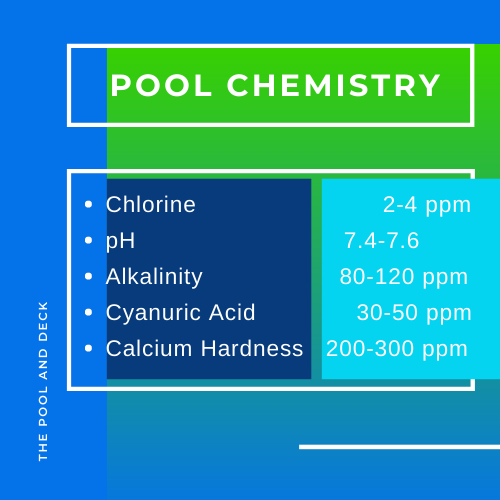
Can you Mix Trichlor and Dichlor?
Honestly I do not see why you should be mixing Trichlor with Dichlor. While both are chlorine sources for your pool, they serve different objectives.
Trichlor typically comes in a tablet form and is placed in the skimmer, floater or feeder. It dissolves slowly but steadily and is used for regular chlorination and sanitization of your pool. Trichlor tablets are not recommended for shocking your pool.
Dichlor, on the other hand, typically comes in a granular form and is used as a shock. It is either sprinkled on the pool surface or premixed in a bucket of water and the solution poured into the pool.
A pool which uses Trichlor tablets for regular chlorination can be shocked using Dichlor granules. Both anyway have similar chemical structure and are quite diluted in the presence of pool water.
Having said that, DO NOT MIX Dichlor and Trichlor, or for that matter any pool chemical, directly with each other. Pool chemicals can have flammable & explosive reactions. It is better to err on the side of caution.
There are enough unfortunate incidents, when pool owners have mixed two pool chemicals (because they did not know any better) only to result in a fire or an explosion.
The mixing of Trichlor & Cal Hypo, both chlorine sources, is particularly dangerous, as it can result in a violent explosion.
Why take a chance, when it is not even necessary!
What are the Pros & Cons of Dichlor & Trichlor?
Pros of Both Dichlor and Trichlor
High Available Chlorine (AC): Both Dichlor and Trichlor have a very high %age of Available Chlorine (AC). Dichlor has 56% or 62% depending on whether it is in “dihydrate” or “anhydrous” form. Trichlor has the highest percentage of Active Chlorine (IC) at 90%, among all chlorine based pool sanitizers.
Cyanuric Acid (CYA): Both Dichlor and Trichlor have Cyanuric Acid (CYA) as an integral part of their formulation. Cyanuric Acid (CYA) is a chlorine stabilizer, essential for protecting the Free Chlorine (FC) from UV rays.
In the case of Dichlor, every 1.0 ppm increase in Free Chlorine (FC) results in 0.9 ppm increase in Cyanuric Acid (CYA). For Trichlor the Cyanuric Acid (CYA) increase is 0.6 ppm.
This feature is very helpful when Cyanuric Acid (CYA) level is low. However, this can turn into a con if the Cyanuric Acid (CYA) level keeps building up and crosses 100 ppm. The effectiveness of Chlorine declines at high levels of Cyanuric Acid (CYA).
Calcium Free: Both Dichlor and Trichlor do not add any calcium to the pool water and will not increase the Calcium Hardness. Excessive calcium in the pool can make the pool water turbid & cloudy and can also lead to scaling.
Pro of Dichlor
Dissolves Fast: Dichlor dissolves rapidly when added to the pool and will quickly spread to all parts of the pool. This is the reason it can be used to shock a pool.
pH Neutral: The pH of Dichlor is typically between 6.5 and 7.0, which is considered neutral. Addition of Dichlor will not alter the pH or alkalinity level of your pool.
Pro of Trichlor
Dissolves Slowly & Steadily: Because Trichlor tablets dissolve slowly and steadily they are great for routine sanitization of the pool. A tablet lasts for a week and maintains the Free Chlorine (FC) level within 2-4 ppm.
Convenience: Each 3” Trichlor tablet is designed to sanitize 10,000 gallons of pool water for a week. It makes life really easy as you do not have to measure it out or do any involved calculations. Just pop it into the skimmer, floater or feeder, once a week and forget about pool sanitization.
Con of Dichlor
Expensive: Dichlor is more expensive compared to Trichlor and other pool sanitization products in the market.
Limited Use: Dichlor is not suitable for routine sanitization as it dissolves fast. You would have to add it every day to your skimmer. It is usually not very useful, as a shock too, because of the high Cyanuric Acid (CYA) content. Unstabilized chlorine sources such as Liquid Chlorine or Cal Hypo are much better options for shocking a pool.
Con of Trichlor
Lowers pH: Trichlor tablet has a pH of just 3.0. The pH & alkalinity of the pool drop when you use Trichlor. You will need to use pH Up, Soda Ash or Baking Soda to balance the pool water for pH & alkalinity.
Bottom Line
The bottom line is that Trichlor is better than Dichlor as the Trichlor tablets are a great way to keep your pool sanitized, throughout the week, with minimum work. Dichlor is not only more expensive it has very limited use.
Both Dichlor and Trichlor are not ideal for shocking the pool because of high levels of Cyanuric Acid (CYA). Unstabilized products such as Liquid Chlorine or Cal Hypo are cheaper and more effective options.
For more information on Pool Chlorine Types refer to my post Complete Guide To Pool Chlorine Types. (What Is The Best?).
Recommended Swimming Pool Chemicals
Best Dichlor Granular
Rx Clear Granular chlorine is 99.3% Sodium dichlor with added benefits of containing bactericide, algaecide, and disinfectant. It has a long shelf-life and low odor. Rx Clear is pH neutral and 100% soluble. Order from Amazon using the link below:
Rx Clear Stabilized Granular Chlorine
Best Trichlor Tablets
Rx Clear 3″ Stabilized Chlorine tablets are 99% Trichlor with added benefits of containing bactericide, algaecide, and disinfectant. It is slow dissolving with 90% available chlorine. The dosage is 1 tablet per 10,000 gallons of pool water which lasts for up to one week. Order from Amazon using the link below:
Rx Clear 3-Inch Water Soluble Chlorine Tabs
Thank you very much for reading the post. I do hope you found it informative and helpful.


